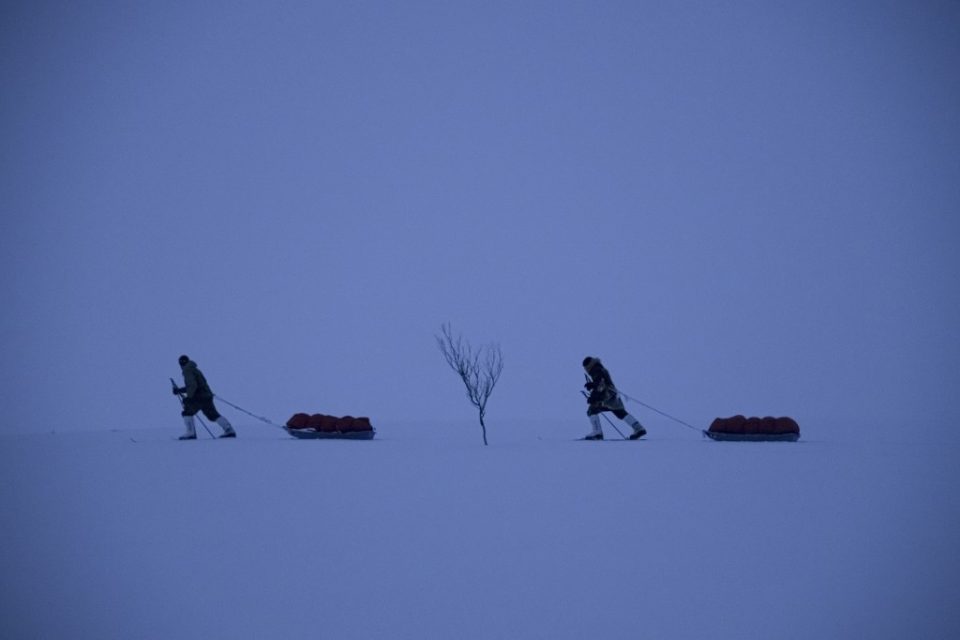
by Olivier MORIN
ALTA, Norway (AFP) — A blueish glow spreads across the snow as far as the eye can see, a few bare trees dotting the windy plateau. In this remote corner of Norway’s far north, two French adventurers are training for their next big exploit.
Next month, Matthieu Bellanger and Loury Lag, both in their 30s, will leave eastern Canada for Alaska in a 130-day expedition passing through the famed Northwest Passage in the Canadian Arctic Archipelago.
They also plan to climb Denali, the highest peak in North America known formerly as Mount McKinley.
They have come to Alta, located at a latitude of 69.5 North, to seek out conditions similar to the extreme latitudes where they’re headed, where temperatures easily plummet to minus 25 or minus 30 Celsius (minus 13 to minus 22 Fahrenheit).
Unfortunately, the Norwegian winter is a little mild this year, with the mercury dropping to just minus 5C (23F) during the day and minus 10C (14F) at night. But at least a snowstorm has brought good dumping of the white stuff.
There are only four hours of daylight at this time of year, in the morning. The sky is whitish-blue, the sun barely managing to creep above the horizon.
The tattooed adventurers practice their routines over and over again, so they can do them quickly in case of extreme cold and strong winds. They set up and take down their tent in a few minutes, and pack their sleds meticulously, the same way every time.
The sleds, which they will pull with a harness around their waists, will each weigh around 60 kilos (132 pounds) at the start of their journey, carrying everything they need to survive.
Their sleeping bags are designed to withstand temperatures as low as minus 60C (minus 76F), and they will mostly eat freeze-dried food during the expedition. A friend, top chef Armand Arnal, has also prepared a few sous to vide (vacuum sealed) dishes for when they need a special pick-me-up.
And to drink, they have as much snow to melt as they could ever need.
© Agence France-Presse







